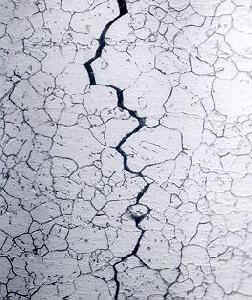
- GALVANIZED STEEL STRESS CORROSION CRACKING MECHANISM PROFESSIONAL
- GALVANIZED STEEL STRESS CORROSION CRACKING MECHANISM CRACK
The outdoor exposure of many structures and the often large loads in terms of weight, size, and support means that the entire design It’s also of critical concern in structural engineering with carbon steel. Something like chocolate with low acidity is likely lower risk than something involving pickles, ketchup, or other high-acidity food products. While broader examples such as maritime oil and petroleum extraction or processing show obvious risks due to the environment, more subtle situations arise in unexpected places as well.įor example, stainless steel is often used in food processing for its hygienic, easy-to-clean properties.īut how pipework or pressure vessels respond - and whether SCC occurs - will vary from product to product. As such, that means that industrial examples tend to be specific. SCC risks are highest in high-temperature and high chloride or sulphide operations. Residual stress often plays a significant role in the development of SCC scenarios.Ĭommon Examples of Stress Cracking Corrosion It’s also important to consider that the applied stress of a process or installation might not be the only stress in play when determining the overall risk for SCC in a given design. This makes them an excellent choiceįor use in high-temperature processes with a risk of SCC.Ĭonsult the table below for additional environmental factors: However, duplex steels - with their blend of austenitic and ferritic metallurgic composition - can typically withstand higher temperatures before succumbing to SCC attack. High-strength steels can fall victim to hydrogen sulphides.Īustenitic stainless steels are particularly susceptible to hot, concentrated chloride solutions and chlorine-contaminated steam. On top of all these variables, the environmental conditions required to encourage SCC will also vary by the metal or alloy in question.įor example, carbon steels are most susceptible to hot nitrate, hydroxide, and carbonate or bicarbonate solutions.
GALVANIZED STEEL STRESS CORROSION CRACKING MECHANISM CRACK
Hydrogen atoms diffuse to the crack tip and embrittle the metal. Pre-existing active path model: Pre-existing paths, such as grain boundaries where intermetallics and compounds are formed, are expanded and exaggerated leaving metal weaker.Įmbrittlement model: Hydrogen embrittlement is a major mechanism of SCC for steels and other alloys such as titanium. The newly formed passive film is ruptured again under stress and the cycle continues until failure. When they’re present, however, experts propose a range of models and mechanisms to explain stress corrosion cracking.Īdsorption model: Specific chemical species adsorbs on the crack surface and lowers the fracture stress.įilm rupture model: Stress ruptures the passive film locally and sets up an active-passive cell. Without all three factors, SCC cannot proceed. Stress corrosion cracking requires three variables to occur:Īn aqueous corrosive media (Chlorides and Hydrogen Sulphide are common) Left to progress undetected, SCC can quickly lead to unexpected sudden failure of normally ductile metals. Stress corrosion cracking is a form of galvanic corrosion in which mechanical and chemical forces that might otherwise pose no threat to a given material result in crack propagation - often at a granular, microscopic level. In this guide, we’ll discuss the common causes of stress corrosion cracking, typical scenarios and industries where SCC occurs, and high-level prevention methods to help minimize risk.

If you don’t create the situations in which SCC thrives, you have much less to worry about in the bigger picture.
GALVANIZED STEEL STRESS CORROSION CRACKING MECHANISM PROFESSIONAL
This means that metal which otherwise looks shiny and in excellent condition can suddenly catastrophically fail with little to no warning.įortunately, while detection often requires complex professional analysis, prevention is much more approachable. While rare, Stress Corrosion Cracking (SCC) offers very little in terms of visual hallmarks, material deformation, or other common detection methods. While resolving the solution might be costly and inconvenient, it’s typically something for which a company can make plans and correct before large-scale failures occur.

This means that detection often occurs well before the point of failure. Many forms of corrosion progress in an easy-to-detect manner, causing visual distortion, discoloration, cracking, and more.


 0 kommentar(er)
0 kommentar(er)
